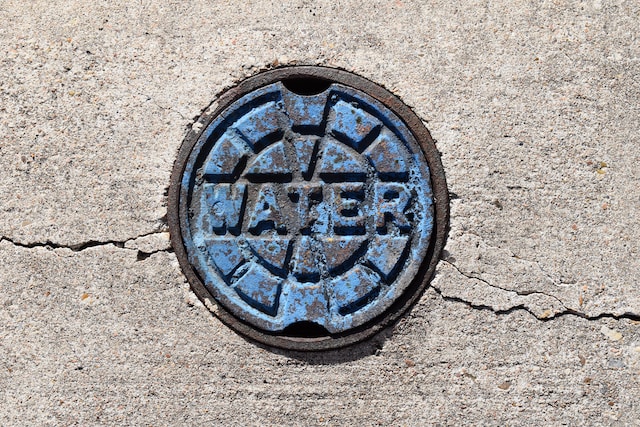Many misconceptions surrounding home insurance can lead to confusion and potentially costly mistakes. This article will debunk the most common myths about home insurance, providing the facts you need to make informed decisions and ensure your home is properly protected.
Myth #1: Home insurance covers all types of damage
One of the biggest myths about home insurance is that it covers all types of damage to your home. However, this is not true. Home insurance typically covers damage from fire, theft, vandalism, and certain natural disasters, but it may not cover floods, earthquakes, or damage caused by wear and tear.
It’s important to understand what is and isn’t covered. Knowing the specific types of damage excluded from your policy can help you determine if additional coverage, such as flood or earthquake insurance, is necessary to protect your home entirely. Ask your insurance provider for clarification on any uncertainties or if you need to add specific coverage based on your property’s location and potential risks.
Myth #2: Home insurance is only for homeowners
Many people mistakenly believe that homeowners insurance is exclusively for homeowners. However, that couldn’t be further from the truth. There is a type of insurance called renters insurance that is specifically designed for those who rent their homes.
Renters insurance provides valuable coverage for your personal belongings and offers liability protection in case someone is injured in your rental property. Renters should have insurance to safeguard their belongings and cover any potential liability.
Myth #3: Homeowners insurance is expensive
You have probably heard that home insurance is expensive, but the reality is that the cost can vary depending on various factors. Factors such as the location of your home, its age, construction materials, and the coverage limits you choose can all impact the cost of your insurance.
When determining the cost of homeowners insurance, insurance providers consider the risk associated with your property. For example, homes in areas prone to natural disasters may have higher premiums. Older homes may require more maintenance and have higher replacement costs, affecting the insurance premium.
The coverage limits you select for your home insurance policy can also impact the cost. Higher coverage limits mean greater protection but can result in higher premiums.
Myth #4: Homeowners insurance covers home businesses
One common misconception is that homeowners insurance automatically covers home businesses. However, most homeowners insurance policies limit coverage for business-related property and liability.
If you run a home business, talk to your insurance provider about getting additional coverage, such as a business owner’s policy, to protect your business assets and liability.
Myth #5: Making a claim will increase your premiums
If you make a claim, your premiums will automatically increase…this is not always true. While filing multiple claims can affect your rates, making a single claim for a covered loss generally does not result in a significant premium increase. Simply put, making multiple claims that are baseless could probably end up with a higher premium. However, if you are making a legitimate claim for something covered, you will probably not experience a rise in rates.
Myth #6: Home insurance covers all personal possessions
While home insurance does offer coverage for personal belongings, there are typically coverage limits and exclusions.
High-value items such as jewelry, artwork, and collectibles may have limited coverage under a standard policy. If you have valuable possessions that exceed these limits or fall under the exclusions, consider additional coverage options to ensure they are fully protected.
To safeguard your high-value items, you may need to purchase a valuable items endorsement, also known as a scheduled personal property endorsement. This endorsement lets you list and insure your valuable possessions at their total appraised value.
Myth #7: Home insurance covers all liability claims
It is important to understand that while homeowners insurance provides liability coverage, this coverage often has limitations and exclusions.
For example, if someone is injured on your property due to a deliberate act or you are found negligent in maintaining your property, your insurance may not cover the liability claim.
Liability claims can arise from situations like slip and falls, dog bites, or accidents on your property. While homeowners insurance may cover some of these claims, certain circumstances may result in your claim being denied.
Limitations and exclusions to liability coverage:
- Intentional acts: If someone is injured on your property due to a deliberate act, such as an assault.
- Negligence: If you are found to be negligent in maintaining your property and someone is injured as a result.
- Business activities: If you operate a business from your home, your home insurance may not provide sufficient coverage for liability claims related to your business activities. You may need to consider additional coverage, such as a business owner’s policy, to protect your assets and liability.
Myth #8: Homeowners insurance is a one-size-fits-all policy
When it comes to homeowners insurance, one size does not fit all. Your home and belongings are unique; your insurance coverage should reflect that. By customizing your policy, you can ensure you have the right coverage to protect your home and assets.
Choose the coverage limits that suit your situation
Coverage limits determine the maximum amount your insurance company will pay in the event of a covered loss. It’s important to assess your home’s and belongings’ value and choose coverage limits that adequately protect you.
Select the deductibles that work for you
Deductibles are the out-of-pocket expenses you’ll need to pay before your insurance kicks in. By choosing higher deductibles, you can lower your insurance premiums. However, consider your financial situation and decide on deductibles you can comfortably afford in case of a claim.
Explore additional coverage options
Additional coverage options include personal property endorsements, which provide extra coverage for high-value items like jewelry or artwork, and additional liability coverage to protect you against lawsuits. Discuss these options with your insurance agent to determine if they are necessary.
Myth #9: Home insurance is not necessary for mortgage-free homes
It’s a common misconception among homeowners that once their mortgage is paid off, they no longer need home insurance. However, this couldn’t be further from the truth. Whether you have a mortgage or own your home outright, it protects your investment and ensures financial peace of mind.
Without home insurance, you would be solely responsible for all the costs of repairing or rebuilding your home in the unfortunate event of a covered loss. Whether it’s a fire, a severe storm, or any other covered peril, the expenses can be overwhelming and potentially wipe out your savings.
Myth #10: Home insurance is a waste of money
Home insurance provides essential financial protection in the event of a covered loss. Rebuilding your home after a fire may be impossible. Homeowners insurance covers the cost of repairs or rebuilding. It is certainly not a waste of money in a crisis.
By understanding the realities of home insurance and reviewing policies carefully, homeowners can make educated choices, protect their investment, and ensure they have the necessary coverage in the face of unexpected events or damages. With accurate information and the right coverage, homeowners can know they are adequately protected.




